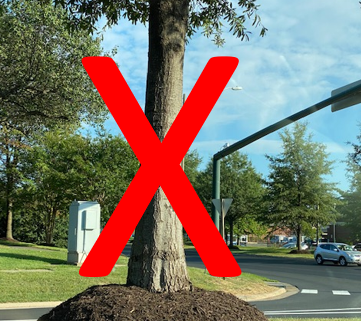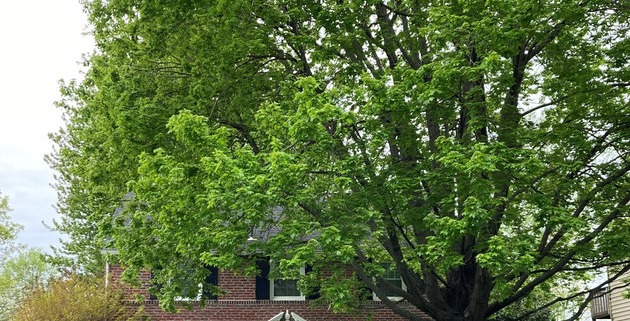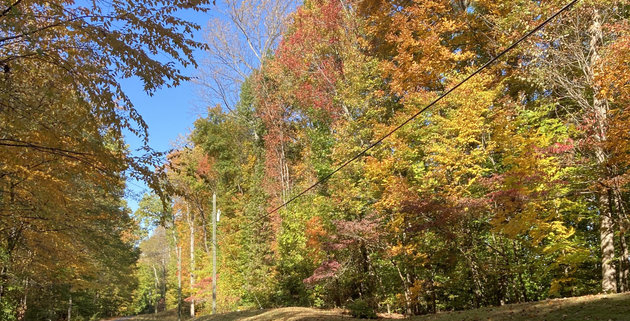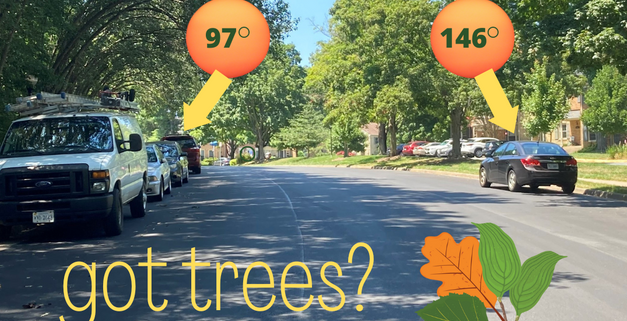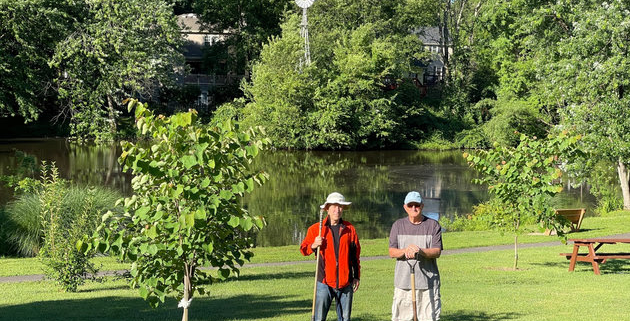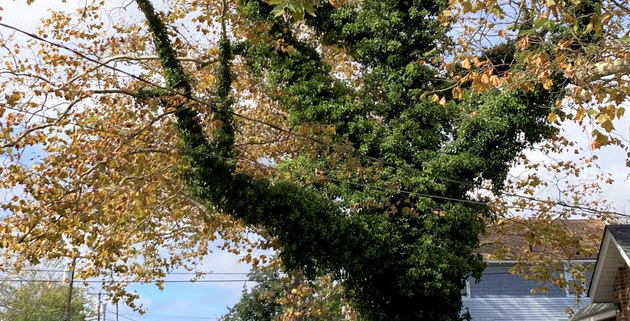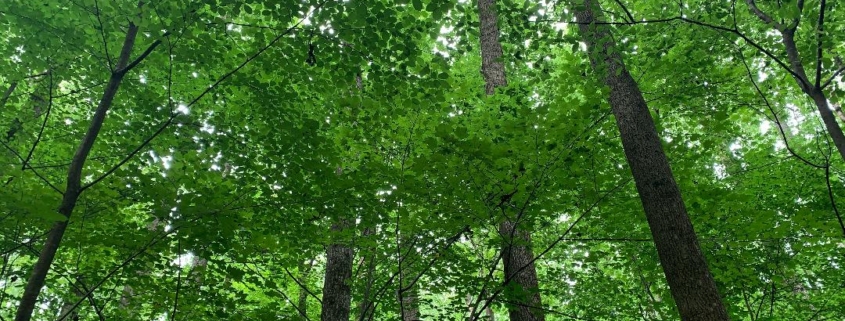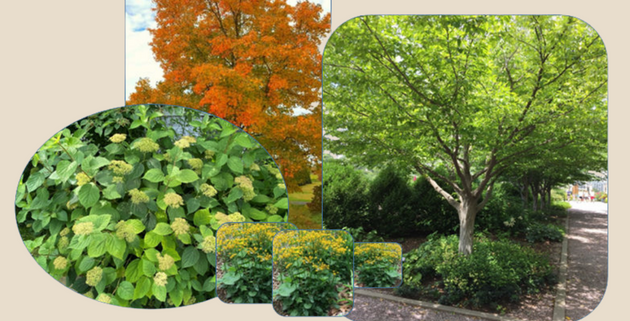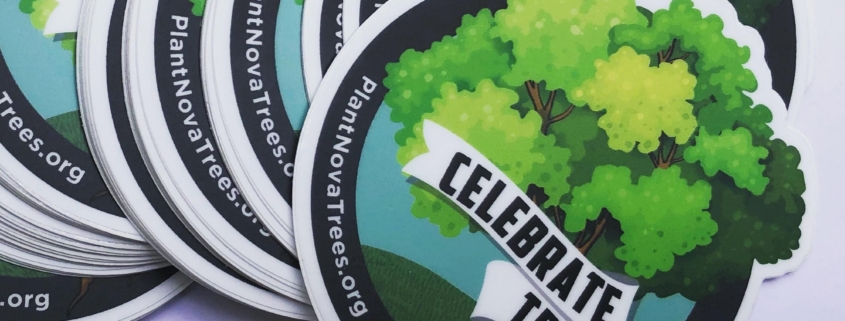September marks the first anniversary of the launch of Plant NOVA Trees, a regionwide effort by over a hundred local organizations and thousands of individuals to promote native trees and shrubs in Northern Virginia. There is no regional tree planting agency that can do the job for us. Rather, it is up to each individual to look around to see how they can contribute, at home, at work, or on common land. Plant NOVA Trees connects people to the resources they need to do that.
There are many ways to participate. The simplest is to identify every appropriate site and plant young trees or shrubs there now, preferably canopy trees if there is room. They may not look like much the first couple years, but soon they will grow and provide shade and cooling for humans as well as shelter and food for our birds and butterflies. Information on how to choose and plant a native tree or shrub is available on the Plant NOVA Trees website. Fifty volunteers have visited local garden centers to hang thousands of tags on the native trees, making them easy to identify. (The same volunteers have been putting red stickers on all the native plants in those garden centers for several years.)
Each of our local jurisdictions and park services has tree planting plans for public lands. For example, the Prince William Soil and Conservation District has been working with 3rd and 4th graders to plant trees on school grounds. Kudos go especially to Purcellville, which planted 118,100 trees last year on former farmland that is owned by the town.
Members of local communities have also gotten together to plant trees in their common areas and to help residents plant on their own properties. So far, residents have self-reported 7850 trees and shrubs on the Plant NOVA Trees website form. The Virginia Department of Forestry is collecting these figures as it works to meet its goal of 600,000 planted in Northern Virginia by 2025. This number is intended to help our region meet its obligation to protect the Chesapeake Bay, since runoff from roofs, roads and empty lawns is causing damage downstream, and trees are nature’s tool for capturing water. Those who appreciate our waterways should give careful thought to how they can contain stormwater on their own properties before it rushes off to erode our streams and dump sediment and pollutants into the Bay.
Despite all these efforts, Northern Virginia is gradually losing tree canopy. Multiple factors contribute to tree death. Some are hard to change on a local level, such as the stress on trees from climate change. Others are absolutely within our control, such as poor planting and mulching practices or the sacrifice of trees for more roads, buildings, and park amenities. Each native tree lost is one less home for birds and other wildlife as our local ecosystem suffers its death from a thousand cuts.
Invasive vines (as opposed to the beneficial native vines) pose another important threat to trees, and this has become one of the foci of the Plant NOVA Trees campaign. Volunteers for the new Tree Rescuers program spot trees that are at risk from English Ivy, Asian Wisteria, or other invasive non-native vines and drop off literature with the owners to alert them to the easily-mitigated problem. While they are at it, the volunteers count the trees at risk so we can get a more precise handle on where resources should be concentrated. So far, over two hundred volunteers have alerted 799 residents to 3491 trees at risk in 4.2 square miles of residential properties. In addition, they have counted almost 22,000 trees at risk in 3.3 square miles of non-residential areas. The data collection is too preliminary to make an accurate extrapolation, but it would appear that the total number of trees in need of rescue in Northern Virginia’s 1,300 square miles may be in the millions.
There are numerous opportunities around Northern Virginia to help control these invasive vines by cutting them near the ground. Over 3500 trees have been reported as saved so far. Besides saving the trees on their own properties, volunteers can organize the work on common land within their communities or join the invasives management programs of the various park services, listed on the Plant NOVA Trees “Rescuing Trees” page. Residents and communities can obtain a permit to clip the vines on VDOT property. In general, though, the resources to control invasives on government-owned land and easements will need to come from the governments themselves (and ultimately from the taxpayers.) It is also critical that everyone stop planting invasive plants to begin with, not only the invasive vines but all the other invasive non-native landscaping plants such as Bradford Pears and Burning Bush that escape from our properties into natural areas.
Businesses have been helping with the regional tree campaign in several ways. Local garden centers are promoting native trees and shrubs in honor of Celebrate Native Trees Week (Sept 26-Oct 2). Landscaping companies are increasingly choosing native species, and a few have started to offer invasive plant removal services. Any company could educate its employees and customers and provide financial support to neighborhoods that need help with their open spaces.
Those businesses that control property can plant and preserve native trees there, which in some places may mean tearing up concrete to make room.
So what can you do to support the native tree campaign? Plant NOVA Trees is essentially an educational organization. The success of this initiative depends on the individual efforts of residents across the region. So what can you do to support the native tree campaign? Plant NOVA Trees is essentially an educational organization. The success of this initiative depends on the individual efforts of residents across the region. There is no shortage of ideas on how to get involved, whether where you live or work or on a wider scale. Find these ideas on the Plant NOVA Trees website.


